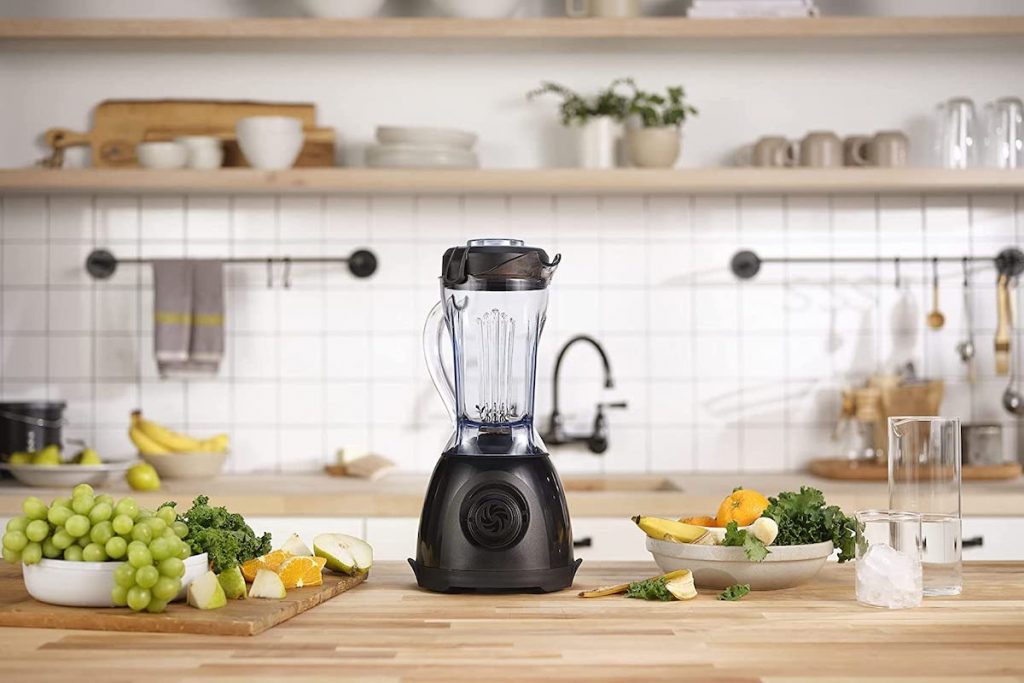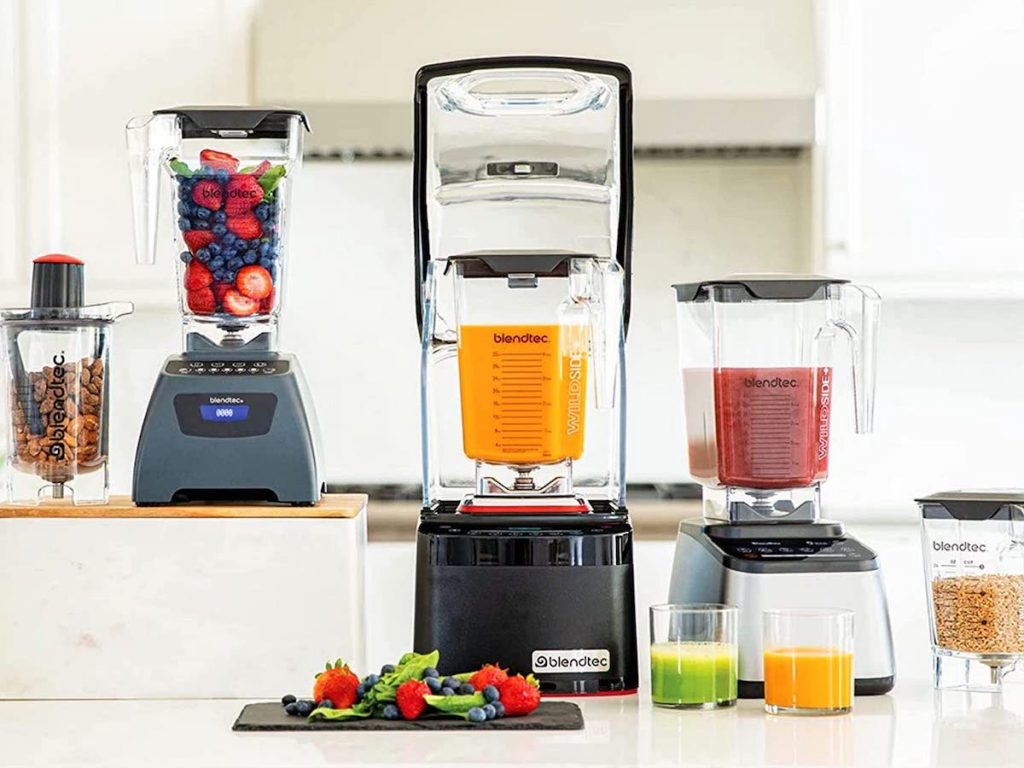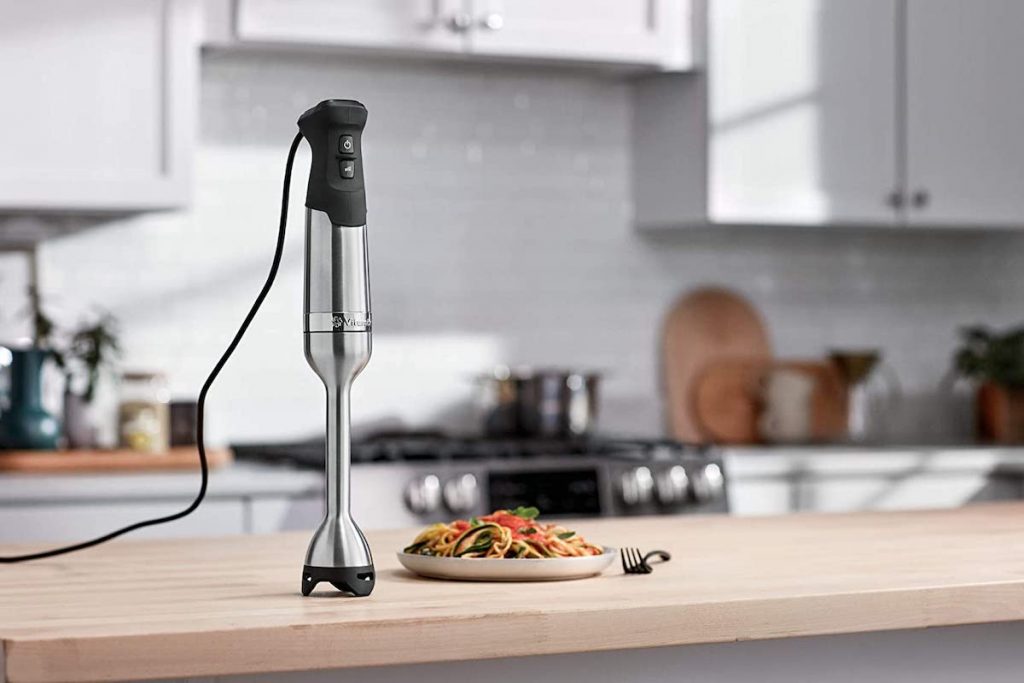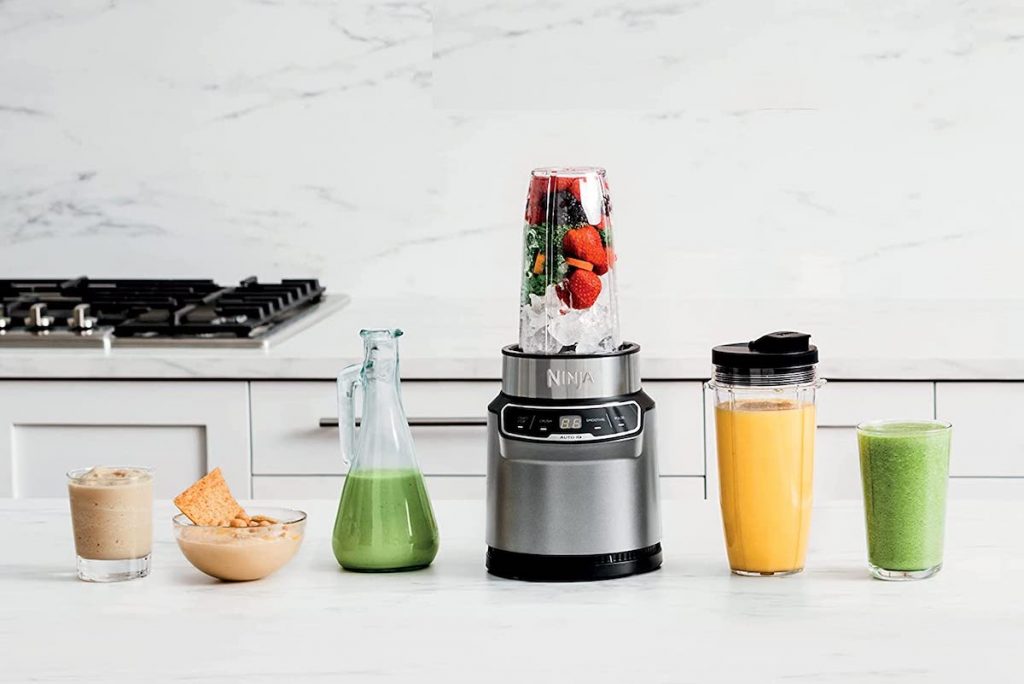Blenders are a versatile, crucial kitchen tool. From allowing for efficient blending, pureeing, and making smoothies to crushing ice and chopping ingredients, you can perform a wide array of tasks with a blender, whether you’re a culinary novice or a seasoned chef.
With so many different types of blenders in the industry, knowing which one to choose for your specific needs can be challenging. Worry not; we will provide valuable insights into how many blenders are in the market, their uses, features, advantages, disadvantages, and everything in between.
Common Types of Blenders
Countertop Blender
We start with one of the common types of blenders; a countertop blender. Its name originates from the fact that it is designed to sit on a kitchen countertop. Besides the base housing the motor, it also comes with a clear jar or pitcher, blades, and a lid. They typically have a large capacity, powerful motor, and several speed settings.

Source from Amazon & Purchase from Collection
Uses Of Countertop Blenders
A countertop blender is best for pureeing, emulsifying, and blending large batches of smoothies, soups, sauces, and more. They are also an excellent choice for cake butter, iced coffee, fresh juice, and sticky dough since it also acts as a stand mixer. As such, a countertop blender is an excellent choice if you host often or are looking for the best blender for a coffee shop, smoothie shop, or bar.
Strengths Of Countertop Blenders
- Versatile: With a countertop blender, you can perform an array of functions, including chopping ingredients, mixing, blending, and pureeing.
- Sturdy and Powerful: They come with powerful motors that are effective even on the toughest ingredients and feature sturdy construction.
- Multiple Speed Settings: This allows for precise control over your blending results; thus, you can customize your blending experience. In addition, it also has a pulsing option for more effortless blending and ensuring that all ingredients are blended.
- Large Capacity: Such makes it ideal for batch prepping.
Weaknesses Of Countertop Blenders
- Bulky: Owing to their enormous size, countertop blenders can be challenging to store.
- Can Be Noisy: Older models can be noisy, which might not be ideal for use in shared spaces.
- Pricey: As expected, due to the quality features, countertop blenders are expensive, which might make them unideal if you a looking for a budget blender.
Commercial Blender
A commercial blender is a powerhouse machine that can handle anything you throw at it. With its robust motor, sturdy construction, and larger capacity, this blender is built to withstand heavy-duty use, day in and day out.

Source & Purchase from Amazon
Powerful Features
The commercial blender comes with a host of advanced features that make it the go-to choice for professional kitchens. With several speed options, programmable settings, and sound enclosures, it offers versatility and convenience, allowing you to customize your blending to achieve the perfect consistency. The bigger-capacity jars can hold larger quantities of ingredients, enabling you to create large batches of drinks, sauces, soups, and smoothies with ease.
Uses of Commercial Blender
This powerhouse machine is designed for heavy-duty use and is the perfect tool for restaurants, juice bars, cafes, and coffee shops. Its speed, versatility, and reliability make it an indispensable tool for making large batches of drinks, sauces, soups, and smoothies. Whether you’re blending a pitcher of margaritas or pureeing a pot of soup, a commercial blender is up to the task, making it a must-have for any professional kitchen.
Strengths of Commercial Blenders
- Exemplary Performance: Commercial blenders feature powerful motors and durable material, which gives them high performance while enabling them to withstand frequent use.
- Ideal for Blending Large Quantities: Their large size makes them suitable for blending large quantities without compromising consistency.
- Advanced Features: These blenders have features that you may not find in most of the other types of blenders for smoothies, sauces, dough, etc. For instance, their sound enclosures help lower the noise levels produced by the unit’s powerful motor.
Weaknesses of Commercial Blenders
- Expensive: As expected, commercial blenders are costlier than other blenders.
- Bulky: They also tend to be heavier and larger, making them harder to store in smaller spaces and carry.
- Loud: Some, such as Kitchenaid blenders and older models, might also be noisy due to their powerful motors unless they have sound enclosures.
Immersion Blender
Also known as stick or hand blenders, immersion blenders are yet another versatile and convenient kitchen tool. They feature a long, slender handheld design, powerful motor, variable speed settings, and versatile attachments and often come compact.

Source from Amazon & Purchase from Collection
Uses of Immersion Blender
As one of the most available types of hand blenders, immersion blenders are ideal for pureeing sauces and soups and blending smoothies and whipping cream. Attachments such as the chopper and a whisk facilitate more tasks such as whisking and chopping. It is also worth noting that immersion blenders are best for small ingredients due to their compactness.
Strengths Of Immersion Blenders
- Easy to Use and Maneuver: Their handheld construction and small size and handheld make them easy to maneuver and use. Besides, the long, slim design also makes them ideal for blending items directly in a bowl or pot.
- Easy to Store and Clean: The compact size makes immersion blenders easy to store hence suitable for small storage spaces or those looking for a minimalistic blender.
- Powerful Motor: It facilitates smooth and consistent results every time.
- Affordable: Immersion blenders are cheaper than countertop and other blender varieties, hence more ideal if you are on a budget.
Weaknesses Of Immersion Blenders
- Uses Manual Control: While this is a safety feature, manual control can be tiring for a long time.
- Can be Messy: Immersion blenders require you to be careful, or else they can cause a mess by splattering.
Personal Blender
Also known as bullet blenders, these are a tinnier version of the countertop blender. Their size is an excellent choice for making individual drink portions. Besides their smaller size, they also have a less powerful motor.

Source from Amazon & Purchase from Collection
Uses of Personal Blenders
Bullet blenders are best for making protein shakes, supplements, purees, baby food, juices, and smoothies in small portions. You can make these drinks directly in a blender bottle; hence pretty convenient.
Strengths of Personal Blenders
- Portable: Personal blenders are compact, so they are easy to carry around, be it in your home, office, or even the gym.
- Convenient, Efficient, and Quick: They are also convenient as you can blend directly into your blender bottle or any other portable cup. They also blend very fast.
- Minimizes Wastage: The small size ensures that you minimize wastage and only prepare what you need; hence ideal for portion control.
- Easy to Store: Bullet blenders do not require a lot of storage space.
Weaknesses of Personal Blenders
- Lack of Variable Speeds: You cannot control how quickly or slowly the ingredients blend.
- Durability Issues: Most personal blenders do not feature heavy-duty parts compared to those featured here; thus not as durable.
Conclusion
Blenders come in various types, each with uses, distinct features, strengths, and weaknesses. For instance, while countertop blenders are versatile, powerful, and perfect for preparing big batches, immersion blenders are portable, compact, and suitable for blending small quantities.
In the end, the best blender for you will depend on your unique needs, preference, and budget. We believe that with our detailed comparison between a commercial, countertop, personal, and immersion blender, you will choose one that is perfect for you.
